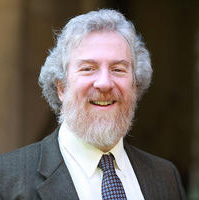Welcome Guests—Visible and . . .

The sukkah is fragile and temporary, yet stands as a symbol of joy and celebration. Rabbi Reuven Hammer, in his commentary Or Hadash (Siddur Sim Shalom, 331), reminds us of a debate about the meaning of Leviticus 23:43 (“You shall live in Sukkot for seven days . . . in order that future generations will recall that I made the Israelite People dwell in Sukkot when I brought them out of Egypt”): “Rabbi Eliezer said that [these sukkot] were clouds of glory and Rabbi Akiba said they were actual huts (B. Sukkah 11b).”
It seems to me that our customs at Sukkot encourage us to give recognition to the view of both Sages. The laws concerning the construction of the sukkah and especially the s’khakh (the natural cover for the roof) are complex, requiring us to be very concerned with the physical realities, recalling the view of R’ Akiba. But the many ways in which the sukkah is decorated, and especially the ushpizin (the spiritual guests invited to join us each night), recall the view of R’ Eliezer, that the sukkah has spiritual as well as corporeal aspects.
The ritual of inviting the celestial ushpizin is included in Siddur Sim Shalom (330) for the first time in any published liturgy of our Conservative Movement. Rabbi Hammer notes both the kabbalistic origin of the custom—inviting Abraham, Isaac, Jacob, Moses, Aaron, Joseph, and David to join us—as well as the contemporary addition of women, including Sarah, Rebecca, Rachel, Leah, Miriam, Deborah, and Ruth.
Many families and communities have developed the custom of asking each person present to invite a guest of their own choosing—perhaps a family ancestor or a person from Jewish history with whom they feel a strong connection on that evening. Our sukkah then becomes a bridge between the corporeal and the incorporeal, both past and present. Our time in the sukkah displaces us from the comfort and familiarity of our homes, our dining tables, and all that is familiar. We are placed, right at the beginning of the New Year, in an unfamiliar place, blessed—I hope—with the presence of family, friends (old and new), community, ancestors of old, and the Shekhinah, the divine presence.
So may it be.
My friend Rabbi Geela Rayzel Raphael has composed a lovely song of welcome to all the Sukkot guests; the text and a further link to a recording can be found at Ritualwell.
Many rabbis see in the frailty of the sukkah a connection with the needs of the frailest among humanity. You will find a number of human rights resources at T’ruah: the Rabbinic Call for Human Rights.
As always, I am interested in hearing comments and reflections on these thoughts about prayer and liturgy. You may reach me at sabarth@jtsa.edu.



